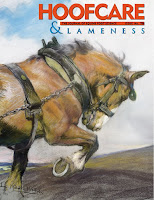 |
| His most famous role was as a teenage vampire and now Hollywood's made Robert Pattinson into a Cornell vet student with a foundered horse to fix. Publicity photo from the Water for Elephants film. |
| Hollywood's Reese Witherspoon plays the role of the circus equestrian star and has an Oscar-worthy wardrobe. The horse and elephant scenes were shot in California; the train scenes are in production now in Chattanooga, Tennessee. This photo from California is from a series published in the Daily Mail from Great Britain. |
One of the first challenges the management throws at him to earn his keep is a horse with laminitis. Can he fix him? In the book, the description of the horse's hoof looks and how the horse stands and what Jacob does to try to help it is very well done. Will laminitis make the silver screen or will it fall to the cutting room floor? Or did it make the script at all? Can they train a horse to act like it is foundered? Even a minute of laminitis awareness in a film like this would be great for public awareness of the disease. And yes, there are farriers in the book, too.
For those of you who haven't read the book: do it. Better yet, get to your library or local independently-owned bookstore and borrow or buy the cd-rom version and listen to the book, as it is very well read. You'll find yourself sitting in your driveway listening to just a little more...
Someone on YouTube.com made a slide show of old circus images to go with the soundtrack of the prologue from the cd-rom. I hope it hooks you, although this is just the first few pages of the book--the rest of it explains how Jacob got to that point of circus mayhem. And what happened next. What you're hearing is Jacob at age 90--or is it 93? he's not sure--in a nursing home, finally telling what happened that day. He'd kept someone's terrible secret for 70 years.
Water for Elephants, the film, is scheduled to be released on April 15, 2011.
© Fran Jurga and Hoofcare Publishing Fran Jurga's Hoof Blog is a between-issues news service for subscribers to Hoofcare and Lameness Journal. Please, no use without permission. You only need to ask. This blog may be read online at the blog page, checked via RSS feed, or received via a digest-type email (requires signup in box at top right of blog page). To subscribe to Hoofcare and Lameness (the journal), please visit the main site, www.hoofcare.com, where many educational products and media related to equine lameness and hoof science can be found. Questions or problems with this blog? Send email to blog@hoofcare.com.
Follow the Hoof Blog on Twitter: @HoofcareJournal
Join the Hoofcare & Lameness Facebook Page



























